National Trauma Transformation Programme: workforce survey 2024
This report presents the main findings from a survey carried out with the workforce in Scotland exploring awareness and attitudes to psychological trauma and trauma-informed practice. The survey was carried out by the Improvement Service as part of the National Trauma Transformation Programme.
6. The National Trauma Transformation Programme
Engagement with the National Trauma Transformation Programme
The following section focuses on the National Trauma Transformation Programme (NTTP), as well as training on trauma and trauma-informed approaches provided by other providers.
Compared with the previous survey, a higher proportion of respondents in the current survey were both aware of the NTTP prior to completing the survey and had completed at least one training session.
In the most recent survey, 42 percent of respondents said they were aware of the NTTP prior to completing the survey, reflecting a statistically significant increase of 10 percentage points from the previous survey. This is shown in Figure 22.
Respondent comments: “We have been fortunate to be part of the National Trauma Transformation Programme.”
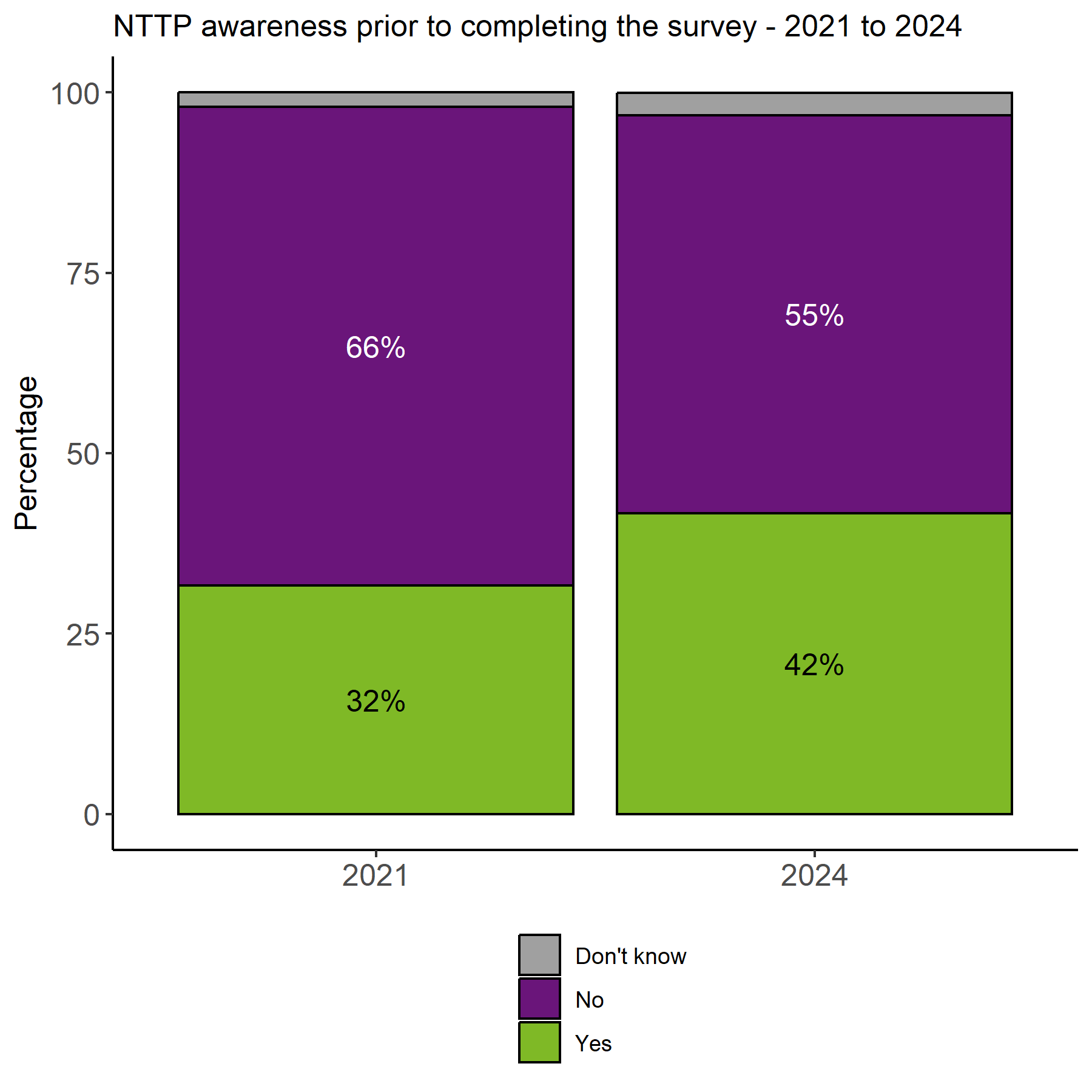
Forty eight percent of respondents in 2024 had completed some form of NTTP training. This is a statistically significant increase of 22 percentage points from the previous survey. This is shown in Figure 23 below. This proportion was higher than the proportion who had been aware of the NTTP prior to completing the survey, suggesting some respondents may not have been aware the training resources were part of the NTTP.
Of those who had completed training in 2024, the majority also agreed they would recommend this training. Excluding those who stated “don’t know” or NA, 83 percent of respondents agreed or strongly agreed that they would be likely to recommend any training they undertook to a colleague. Of those who agreed they would recommend training, respondents noted that they found the training very informative and of value to all staff in influencing how they approach both their work and home life.
“I thought the training was incredibly impactful and valuable. I did this training while in a front-line role and made me change the way I did some things, but also reinforced that we already worked in a trauma informed way in the main.”
“I would recommend it to all staff, critical that all staff have this knowledge for us to be truly trauma informed.”
Whilst the majority of respondents would recommend the training, some respondents felt that whilst the training provides knowledge there is a lack of structures in place to ensure this translates to a change in practice.
“Any training I have attended, across multiple providers, has been rooted in theory. How to put into practice in the face of a full class of children is routinely met with no solutions or advice, or at times completely ignored.”
“Most CPD raises awareness but doesn't actually help implement strategies, so beyond doing an initial training, is relatively pointless.”
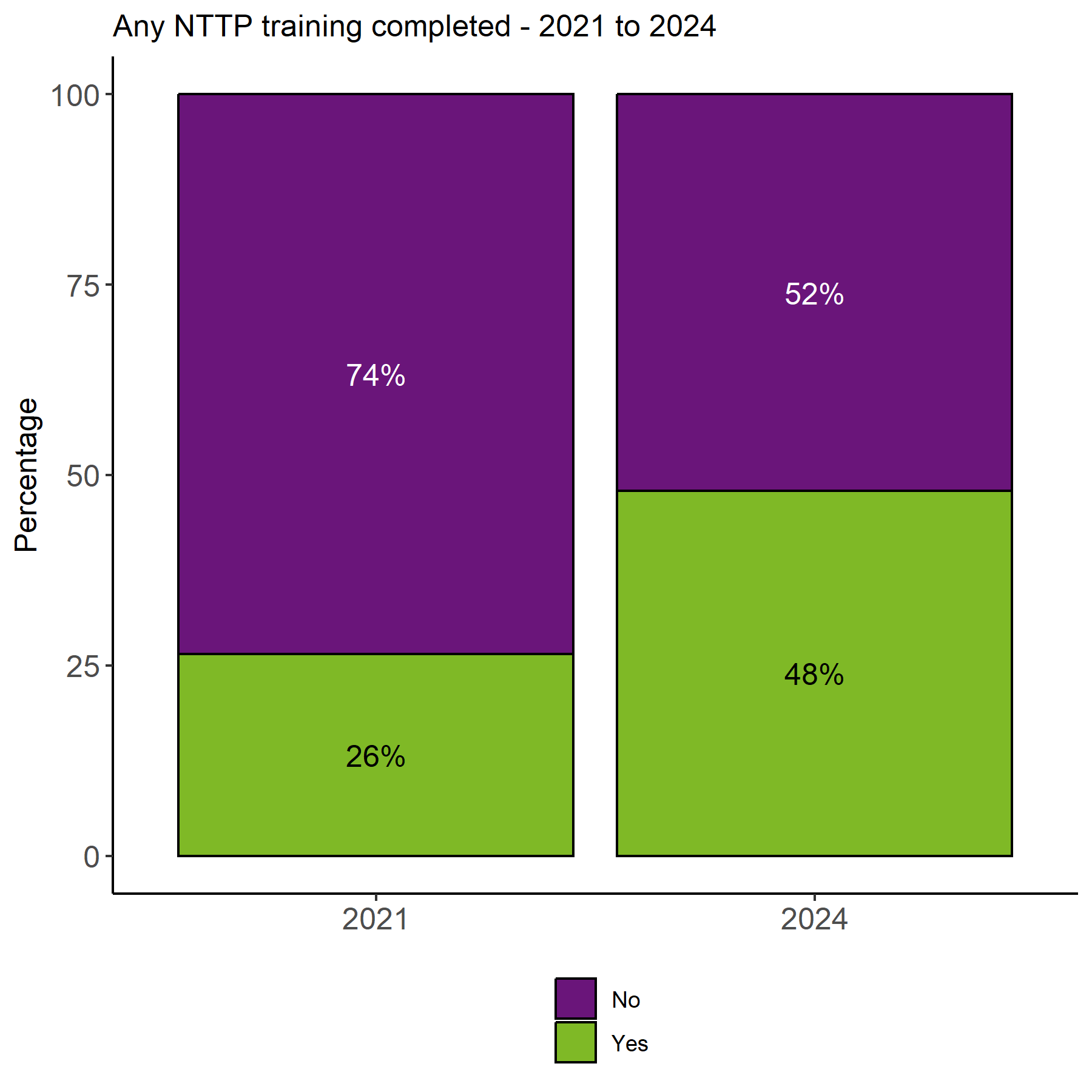
Of the different training sessions available, the most common type of training completed by respondents in the 2024 survey was “Trauma informed”, for example “Opening Doors” and “Sowing Seeds” animations, and trauma skilled e-modules, for example “Developing your trauma skilled practice”. Twenty eight percent and 26 percent of respondents who had completed any NTTP training had completed these, respectively. The proportion of all respondents who had completed each training module in 2021 and 2024 is shown in Figure 24. A full list of available training offered as part of the NTTP is available through the website.
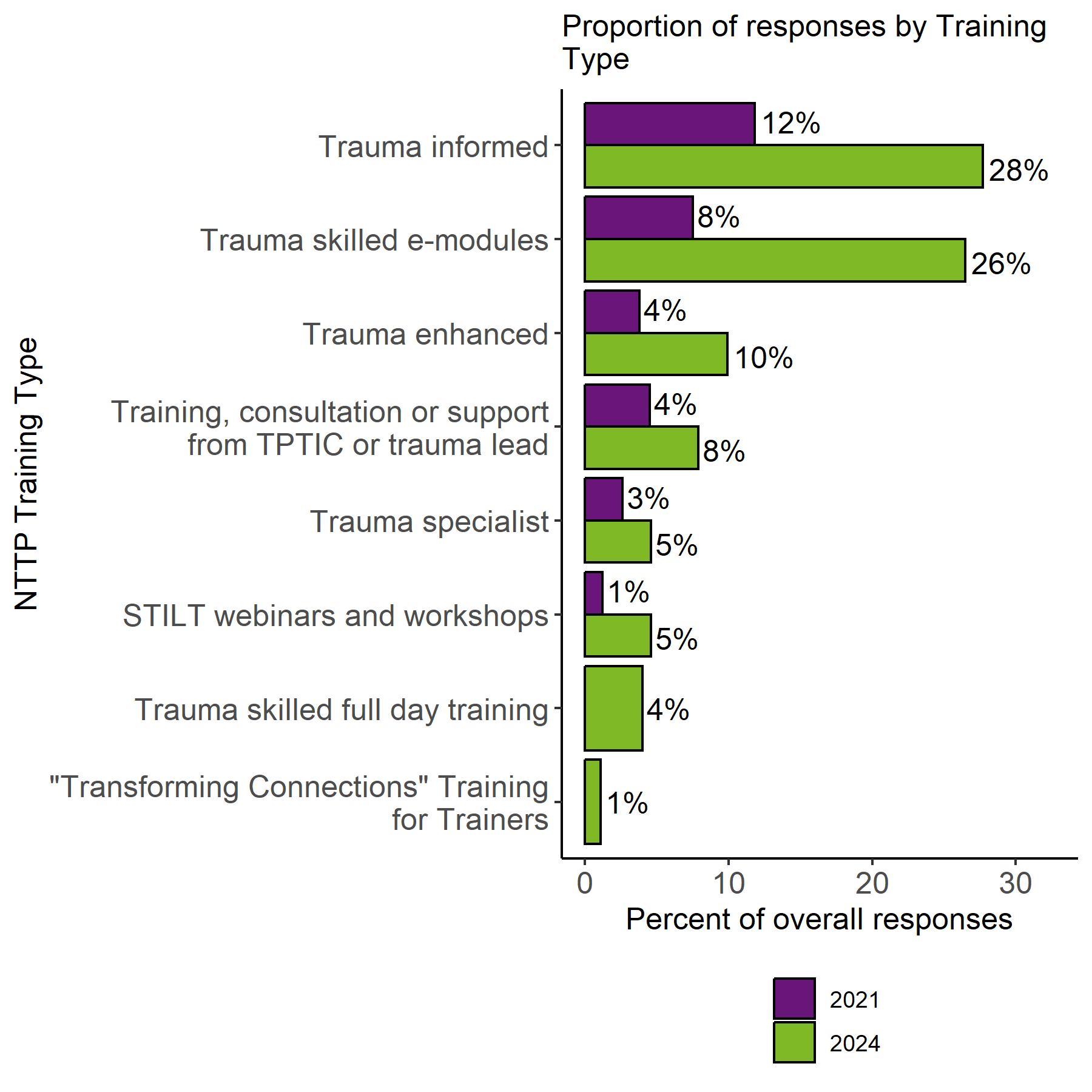
When asked about other training, 31 percent of respondents stated they had accessed training around developing trauma-informed practice by another provider or organisation. This has not significantly increased since the previous survey where 30 percent had accessed other training. Examples of other training undertaken included training provided by private providers, through NHS Education for Scotland TURAS, by individual Health Boards or local partners, and in-house training.
Respondents working in the third/voluntary sector were most likely to have completed NTTP training in both 2021 and 2024. The proportion from the third/voluntary sector who had completed training was statistically significantly higher than the proportion of public sector respondents. However, the gap between third/voluntary sector respondents and public sector respondents has reduced due to a larger increase in the proportion of public sector respondents who completed training. As shown in Figure 25, all sectors have had an increase in the proportion who had completed at least one type of training between the two survey iterations.
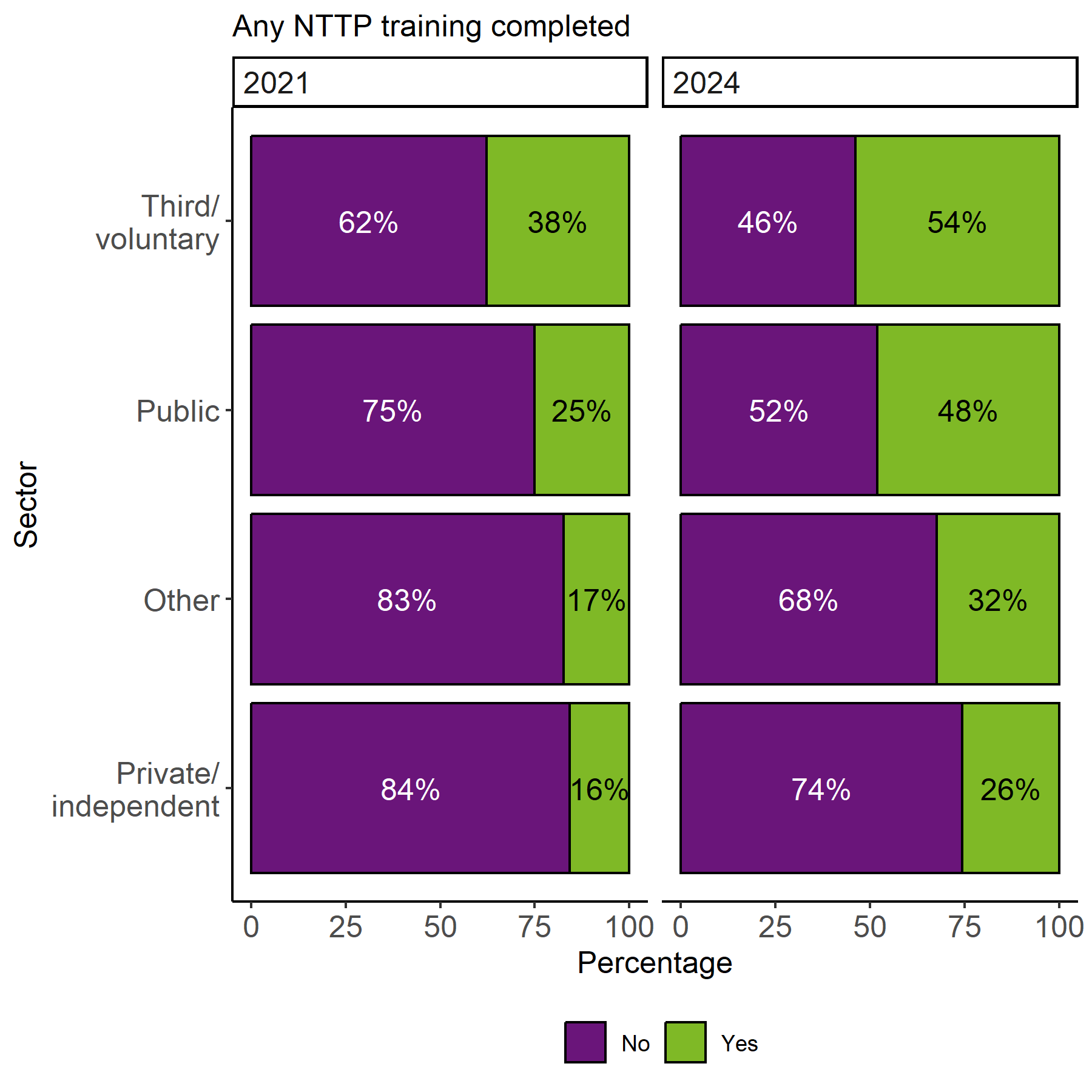
Completion of NTTP training also varied between service areas with the largest proportions seen for those working in alcohol and drugs, violence against women and equalities, and mental health. The proportion of respondents who had completed some form of NTTP training increased across all service areas since 2021, except for employability, where response numbers in both years were very small. The proportion of respondents who had completed some form of NTTP training who work in violence against women and equalities; learning, development, and training; and social care and social work all increased by 27 percentage points between surveys. The full breakdown by service area is shown in Figure 26 and Figure 27.
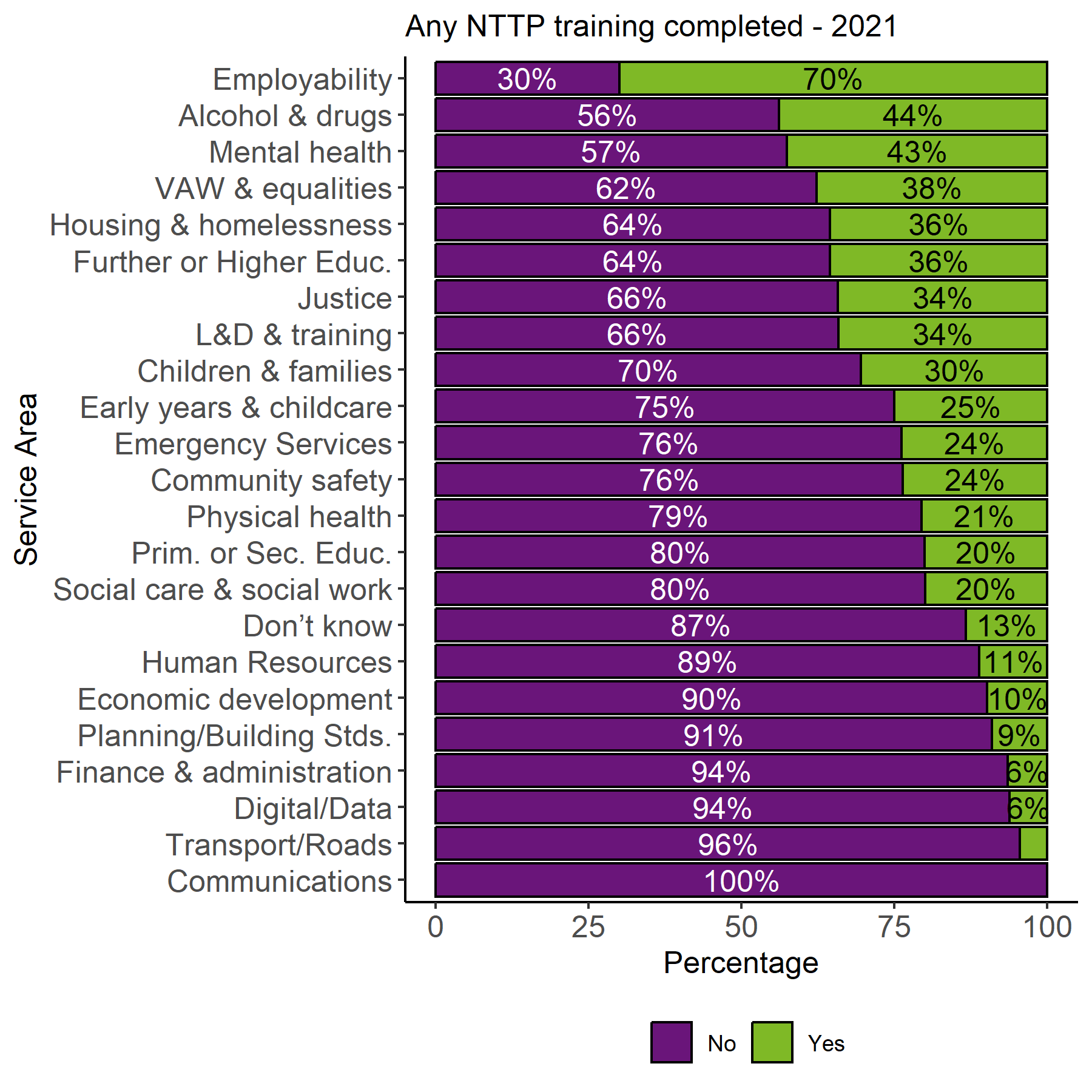

Uptake of NTTP resources also varied by job role of respondents. Those working in middle management roles were the most likely to have completed NTTP training. Whilst the proportion across all job roles increased over time, this group had the largest increase of 33 percentage points, as shown in Figure 28.
Respondent comments: “We are working towards a trauma informed council wide service. This is coming from the top down so has the leadership support. Trauma informed training is available to managers and front facing staff. There is an appetite for change here and while the services I work with are I believe, trauma informed, I think it will take time to reach wider council services.”
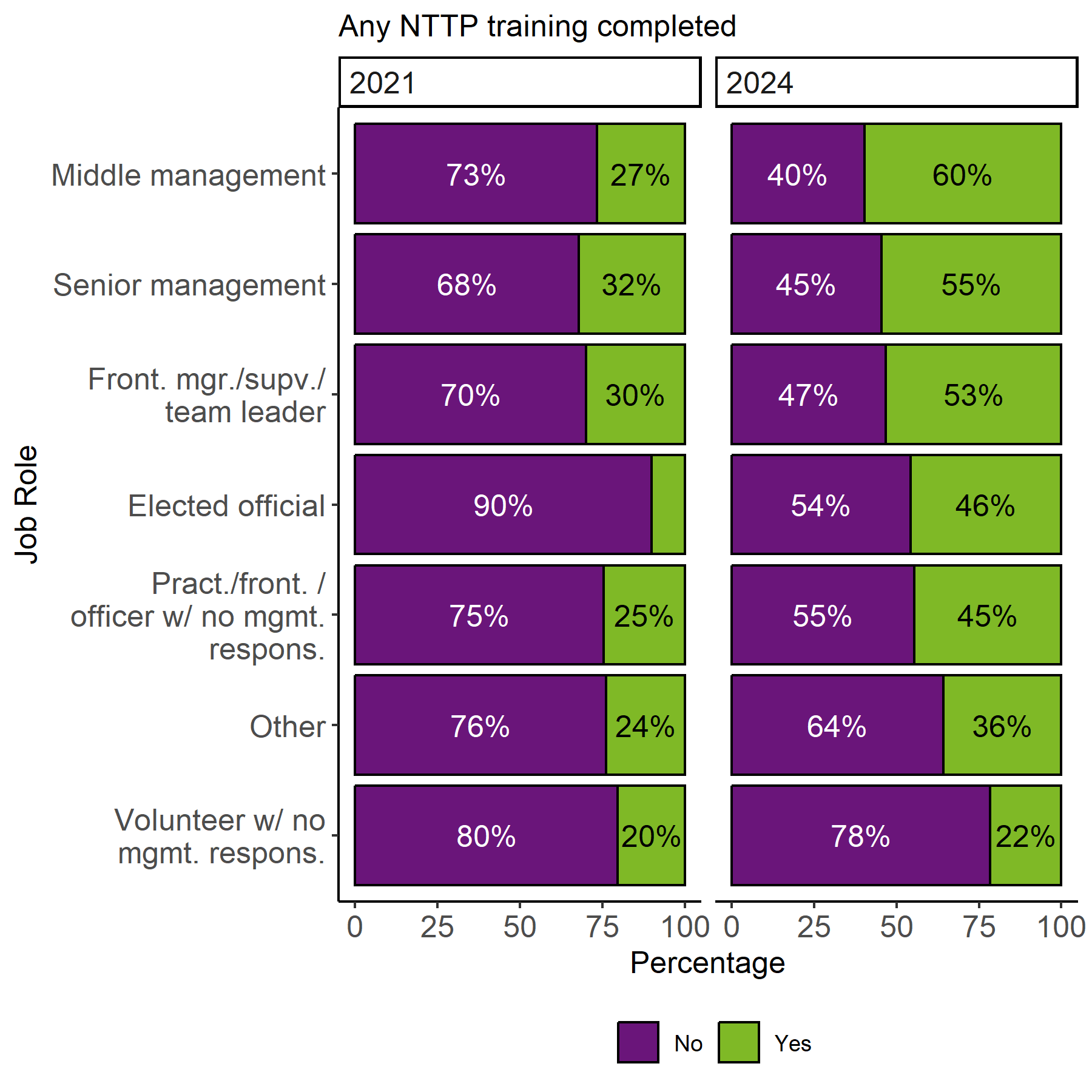
Survey results by NTTP engagement
Across all survey statements, including those relating to confidence in understanding trauma and trauma-informed practice as well as those rating how well organisations and services embed key drivers of trauma-informed practice, respondents who had completed at least one type of NTTP training were more likely to say they were confident or agreed than those who had completed no training. These differences were all statistically significant, suggesting that those who had completed NTTP training were more confident in their understanding of trauma-informed practice and were more likely to work in organisations that embedded this practice.
One of the largest differences between those who completed training and those who did not was seen in responses to the statement “Understanding of the principles of trauma-informed practice”. Those who had completed training were almost 40 percent more likely to say they were confident in understanding the principles than those who had not.
Figures 29 to 34 show the full breakdown in responses to statements about self-assessed confidence and trauma-informed organisations between respondents who had completed NTTP training and those who had not.
Respondent comments: “I just completed my trauma informed training session a few days ago and this was a new concept to me. I found the training very informative and relative to my area of work, but I had never heard of it before, and I hope to see much more of it in the future.”
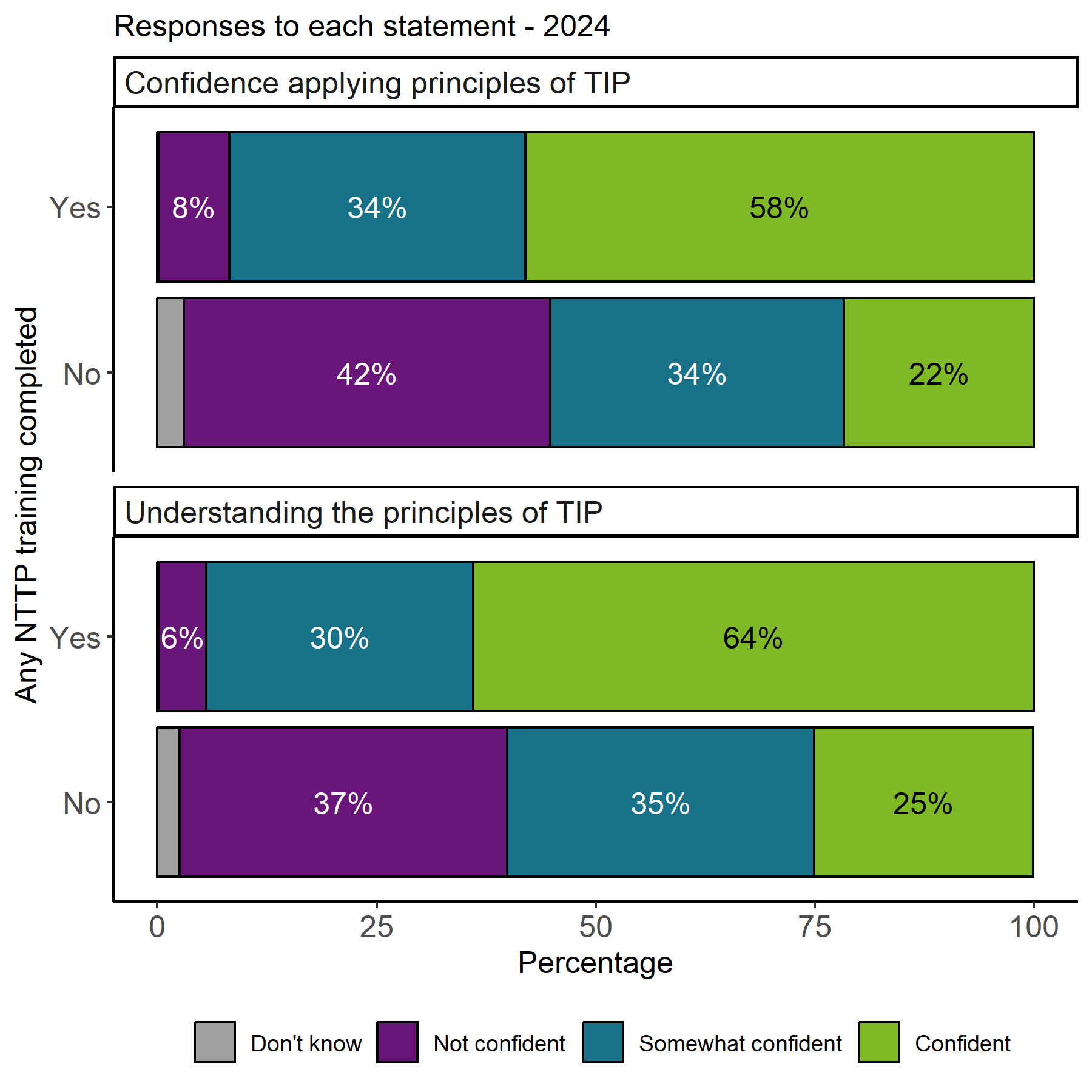
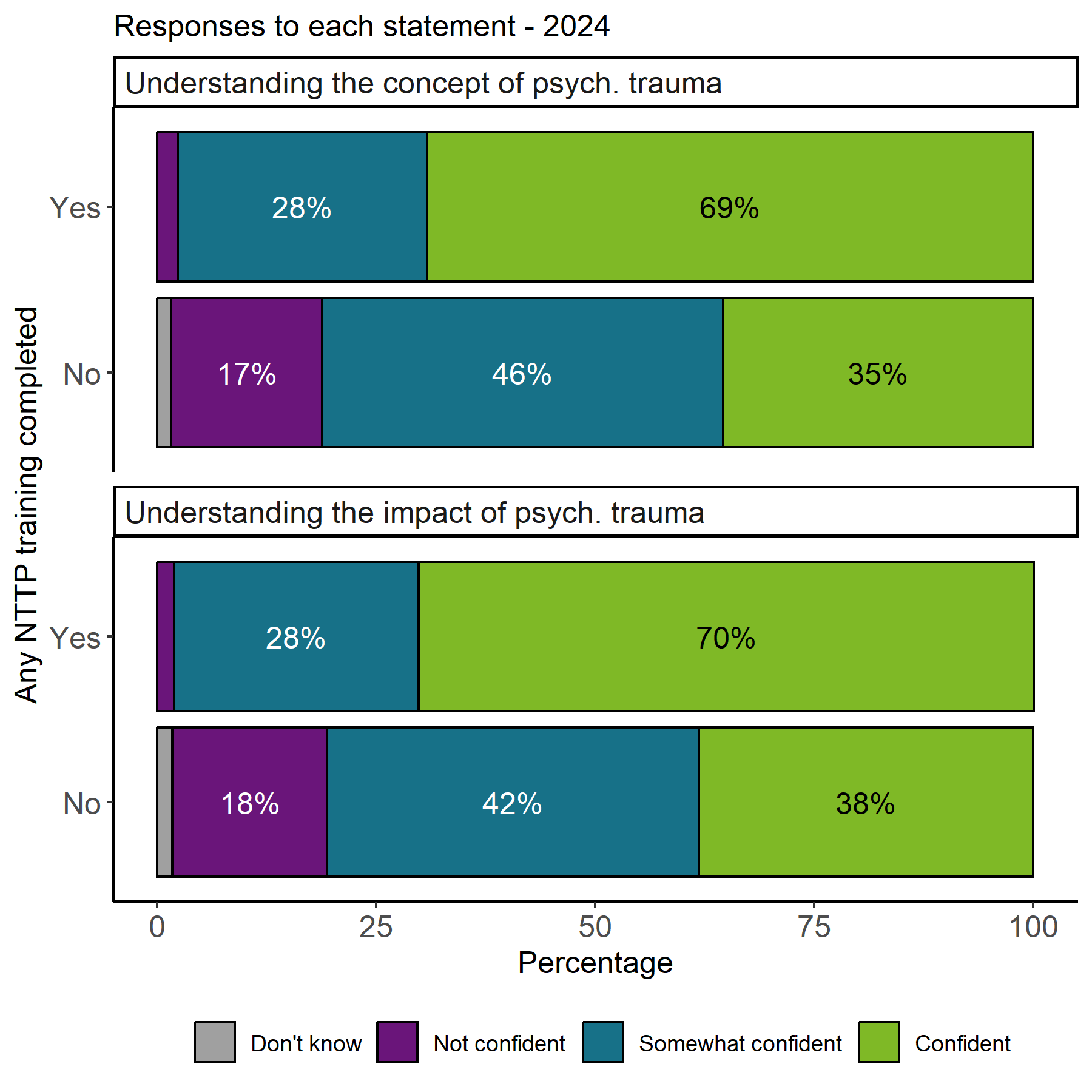
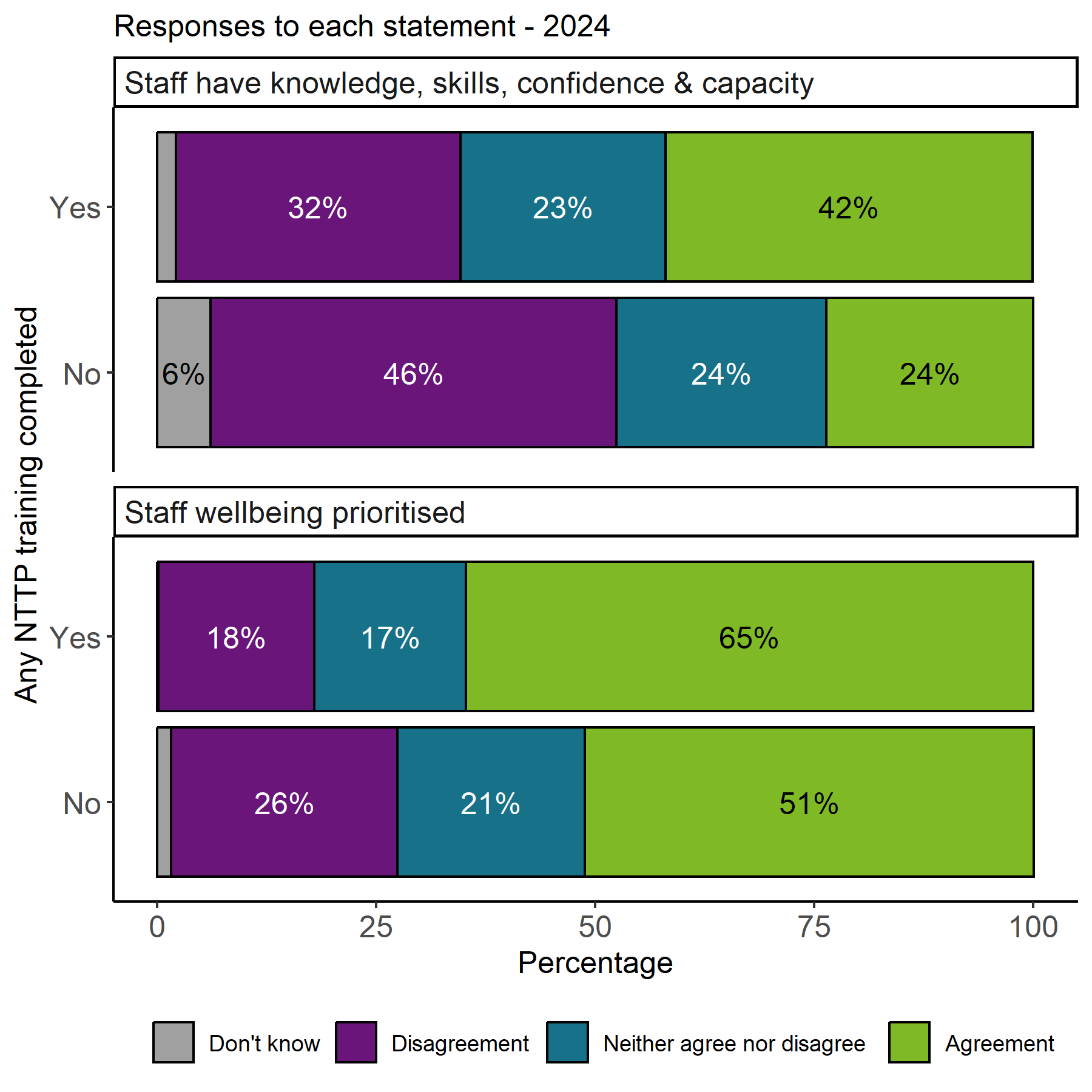
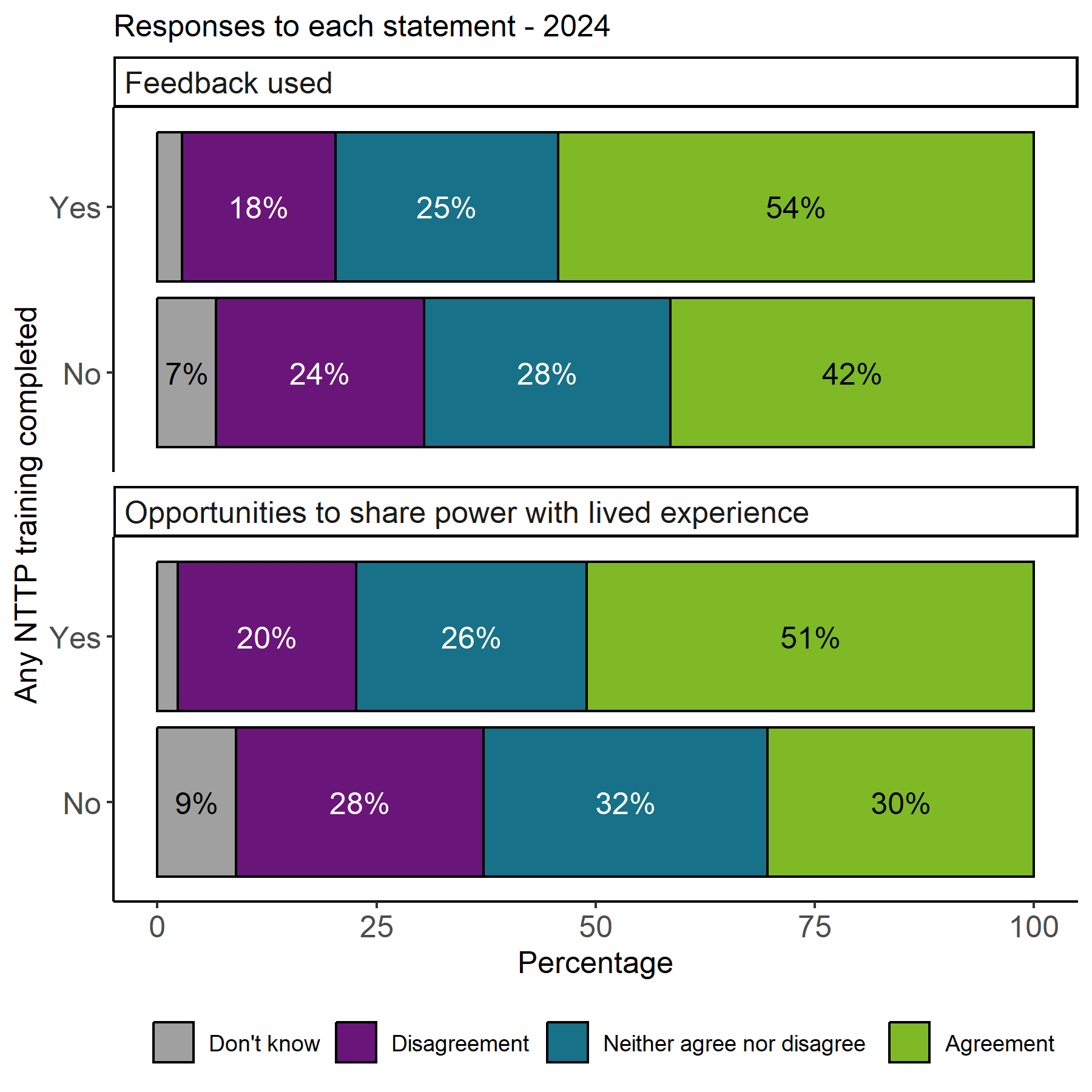
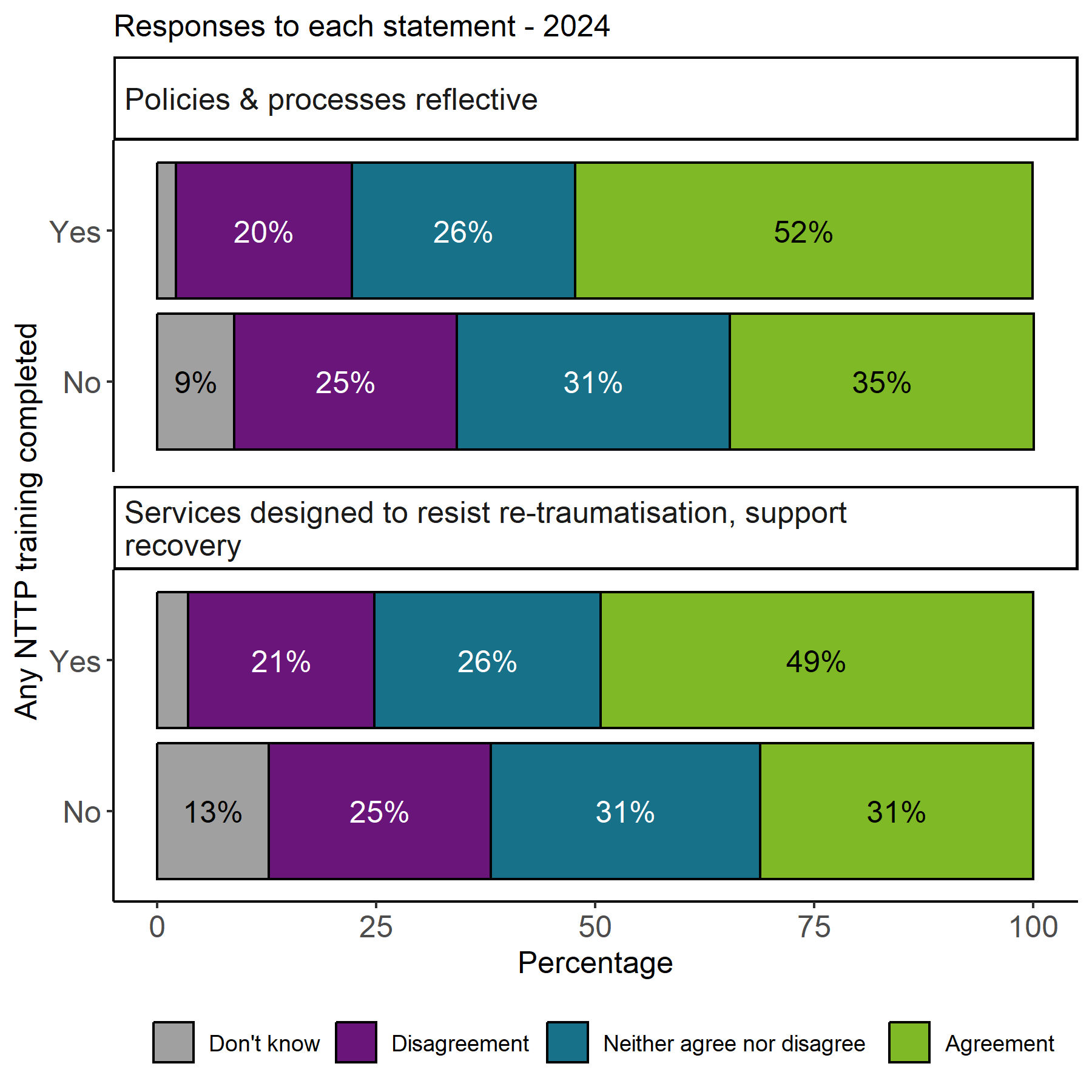
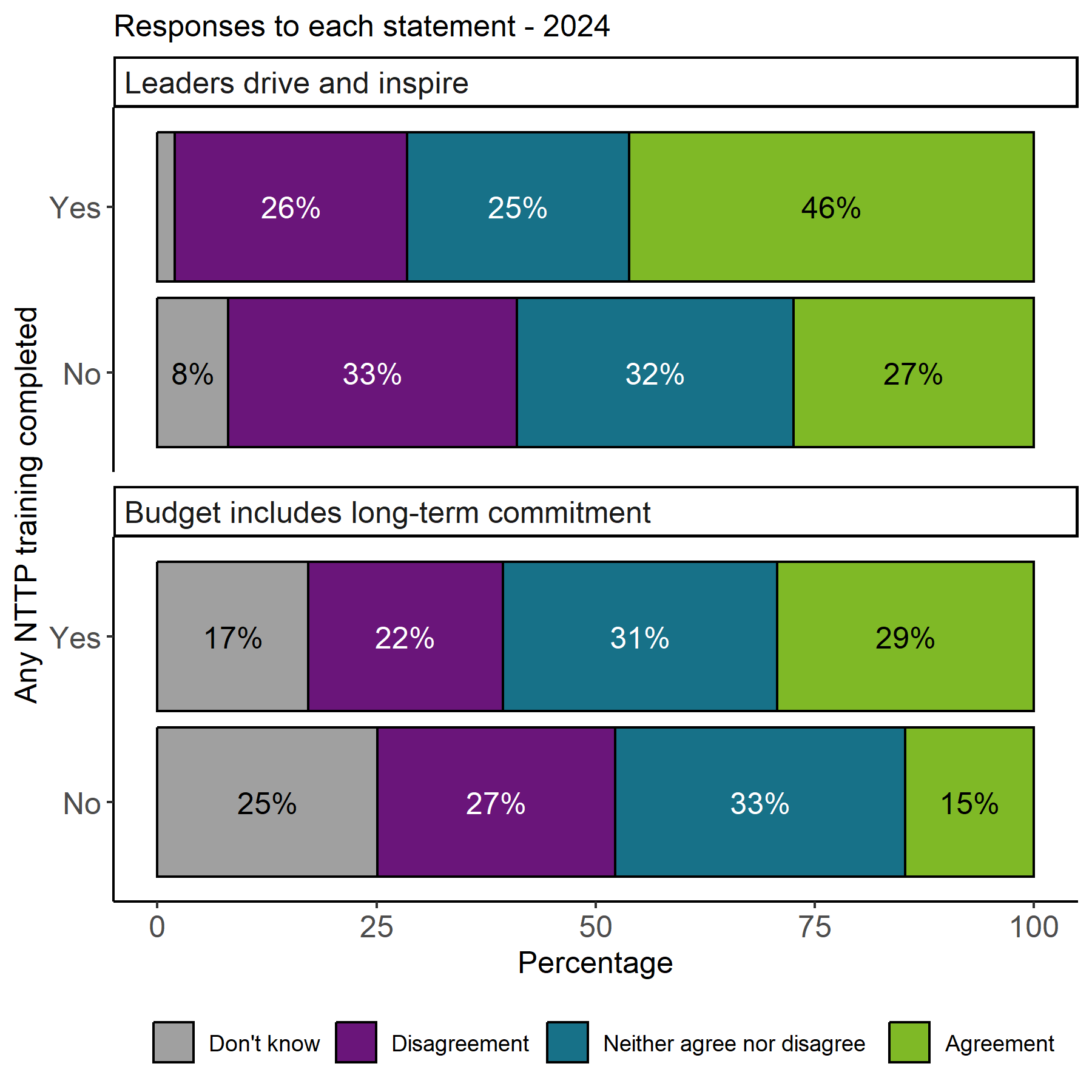
Contact
Email: ACEstrauma@gov.scot
There is a problem
Thanks for your feedback